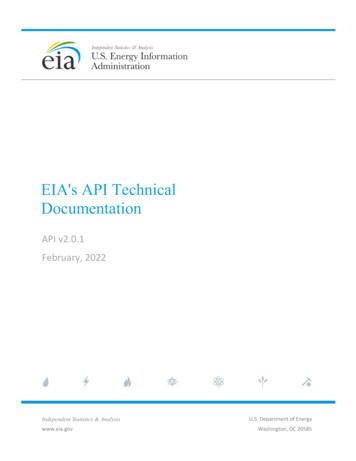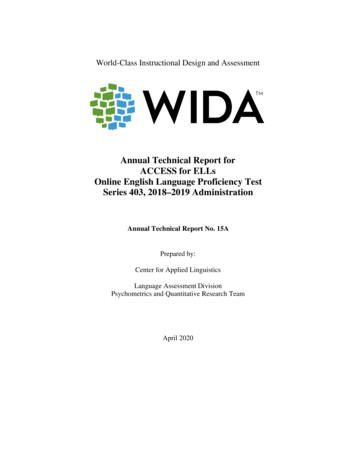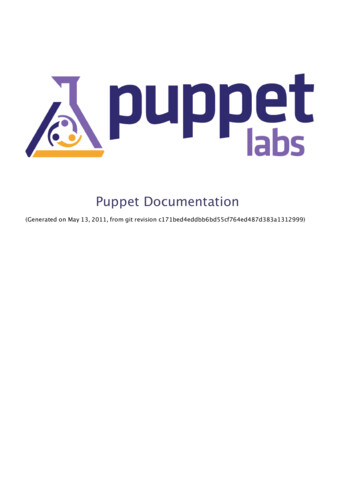
Transcription
Technical Report Documentation Pa eI. Report No.2. Government Accession No.3. Recipient's Catalog No.TTJJITS RCE-95/024. Title and Subtitle5. Report DateAssessment of METROLift Automatic Vehicle Location SystemSeptember 19956. Performing Organization Code7. Author(s)8. Performing Organization Report No.Laura Higgins, Nitin Vaidya, and Katherine F. Turnbull9. Performing Organization Name and Address10. Work Unit No. (TRAIS)Texas Transportation InstituteThe Texas A&M University SystemCollege Station, Texas 77843-3135DTFH61-93-X -00017-004II. Contract or Grant No.I2. Sponsoring Agency Name and Address13. Type of Report and Period CoveredInterim:Texas A&M ITS RCETexas Transportation InstituteThe Texas A&M University SystemCollege Station, Texas 77843-3135January 1994 to December 1994I4. Sponsoring Agency CodeI5. Supplementary NotesResearch supported by a cooperative agreement from the Federal Highway Administration, ITS ResearchCenter of Excellence Program. Additional support for Texas A&M ITS RCE research is was provided by theTexas Department of Transportation, the Metropolitan Transit Authority of Harris County, and the TexasTransportation Institute.Research Project PT -0 1: Improve Specialized Transportation Service Delivery16. AbstractThis report examines the use of an automatic vehicle location (AVL) system with the paratransit servicesoperated by the Metropolitan Transit Authority of Harris County (Houston METRO). METRO providesspecialized paratransit services to individuals with special needs within the Houston metropolitan area. Theservice, which is called METROLift, provides pre-scheduled, curb-to-curb transportation for individuals who areunable to ride accessible fixed-route buses. METROLift provides approximately 2,300 daily trips utilizing 153vehicles. In 1993, METRO initiated the use of an AVL system with the METROLift service.This report examines the use of the AVL system and its impact on the METROLift service. It includesan assessment of the performance of the AVL system; changes in METRO Lift response times, customercomplaints, backup taxi service, and the ratio of passenger miles to revenue miles; and the reaction of operatingpersonnel. It also identifies additional enhancements to specialized transportation services through the applicationof ITS technologies. Transit systems throughout the United States and the world are examining methods toirnprove the responsiveness of specialized paratransit services, while at the same time maximizing the efficiencyof the services. The results from this research study indicate that an AVL system can help in meeting theseobjectives.I7. Key WordsIS. Distribution StatementAutomatic Vehicle Location, AVL,·Transit, BusLocation Technology, Intelligent TransportationSystems, ITSNo restrictions. This document is available to thepublic through NTIS:National Technical Information Service5285 Port Royal RoadSpringfield, Virginia 2216119. Security Classif.(ofthis report)20. Security Classif.(ofthis page)21. ·No. of PagesUnclassifiedUnclassified98Form DOT F 1700.7 {8-12)Reproduction of completed page authorized22. Price
ASSESSMENT OF METROLIFTAUTOMATIC VEHICLE LOCATION SYSTEMbyLaura HigginsAssistant Research ScientistNitin VaidyaAssistant Research ScientistKatherine F. TurnbullResearch ScientistResearch Report 95/02Research Project PT -01: Improve Specialized Transportation Service DeliverySponsored by theTexas A&M ITS Research Center of ExcellenceSeptember 1995TEXAS TRANSPORTATION INSTITUTEThe Texas A&M University SystemCollege Station, Texas 77843-3135
TABLE OF CONTENTSPageLIST OF FIGURES . viiLIST OF TABLES . . . . . . . . . . . . . . . . . . . . . . . . . . . . . . . . . . . . . . . . . . . . . . . . . . . . . . . .VlllSUMMARY . . . . . . . . . . . . . . . . . . . . . . . . . . . . . . . . . . . . . . . . . . . . . . . . . . . . . . . . . . . . . ixIntroduction . . . . . . . . . . . . . . . . . . . . . . . . . . . . . . . . . . . . . . . . . . . . . . . . . . . . . . . . . 1xBackground ·. . . . . . . . . . . . . . . . . . . . . . . . . . . . . . . . . . . . . . . . . . . . . . . . . . . . . . . . . 1xMETROLift AVL System Performance . . . . . . . . . . . . . . . . . . . . . . . . . . . . . . . . . . . . xiImpact of METROLift AVL System . xiiChanges in Service Efficiency . . . . . . . . . . . . . . . . . . . . . . . . . . . . . . . . . . . . . . xiiReaction of METROLift Dispatchers and Operator . . . . . . . . . . . . . . . . . . . . . xiiiReaction of METROLift Customers . . . . . . . . . . . . . . . . . . . . . . . . . . . . . . . . xivConclusions . . . . . . . . . . . . . . . . . . . . . . . . . . . . . . . . . . . . . . . . . . . . . . . . . . . . . . . . . xvCHAPTER ONE-INTRODUCTION . 1Organization of this Report . . . . . . . . . . . . . . . . . . . . . . . . . . . . . . . . . . . . . . . . . . . . . . 1CHAPTER TWO-METROLIFT . 3METROLift . 3Automatic Vehicle Location Systems . 3Ground-Based A VL Systems . 4Satellite-Based A VL Systems . 6AirTouch Teletrac A VL System . 8METRO Lift AVL System . 8Test Procedures . 11CHAPTER THREE-ASSESSMENT OF THE METROLIFT AIRTOUCH AVLSYSTEM .Accuracy-Locating a Stationary Vehicle . . . . . . . . . . . . . . . . . . . . . . . . . . . . . . . . . .Accuracy-Edge of Service Area .Accuracy-Underground .Accuracy-Moving Vehicle .Data Throughput Assessment .Evaluation of the ETAK Map .v19192222242728
TABLE OF CONTENTS (Continued)PageCHAPTER FOUR-IMPACT OF THE AirTouch AVL SYSTEM ON METROLift .Changes in Service Efficiency .Ratio of Passenger Miles to Vehicle Revenue Miles .Backup Taxicabs .On-Time Performance .Reaction of METROLift Dispatchers and Operators .Reaction of METROLift Customers .35353536364040CHAPTER FIVE-USE OF AN A VL SYSTEM WITH THE FULL METRO FLEET . 45The Use of A VL Systems by Other Transit Agencies . 45VIA Metropolitan Transit-San Antonio, Texas . 45Toronto Transit Commission-Toronto, Ontario . 46Ottawa-Carleton Regional Transit Commission-Ottawa, Ontario . 47King County Metro-Seattle, Washington . 4 7Mass Transit Administration-Baltimore, Maryland . 48Regional Transit District-Denver, Colorado . 49Milwaukee County Transit System-Milwaukee, Wisconsin . 50Expansion of an AVL System to the Full METRO Fleet . 50CHAPTER SIX-OTHER ITS TECHNOLOGIES TO ENHANCE SPECIALIZEDPARATRANSIT SERVICE . 57CHAPTER SEVEN-CONCLUSIONS . 59REFERENCES . 61APPENDIX A-EFFECT OF POWER SOURCES AND ANTENNA GROUNDPLANE . 63APPENDIX B-TEST OF DGPS AND E-SYSTEMS ACCURACY . 65APPENDIX C-SAMPLE OF SELECTED TEST PLOTS . 67VI
LIST OF FIGURESFigurePage1Example of Ground-Based AVL System . 52Example of Satellite-based AVL System . 73AirTouch AVL System . 94AirTouch AVL System Service Area . 105AVL System Accuracy Test Locations . . . . . . . . . . . . . . . . . . . . . . . . . . . . . . . . . . . . . 156Detail of Site for Moving Vehicle Location Accuracy Tests . 167AirTouch Location Error for Moving Vehicle (Meters) . 258Error Perpendicular to Direction of Travel (Meters) . 269Ratio of Passenger Miles to Vehicle Revenue Miles-Month Averages . 3710Percentage of Trips Made by Backup Taxi Service . 3811Percentage of Late Vehicles . . . . . . . . . . . . . . . . . . . . . . . . . . . . . . . . . . . . . . . . . . . . . 3912METROLift Service Complaints per 100,000 Riders . 4313Key Steps to AVL System Selection . 51Vll
LIST OF TABLESTablePage1Differences Between E-Systems and AirTouch Readings: 2 Bellaire RouteDairy Ashford Branch, First Test (Values in Meters) . 202Differences Between Known Site and AirTouch Readings: 2 Bellaire RouteDairy Ashford Branch, Second Test (Values in Meters) . 213Differences Between DGPS and AirTouch Readings: Areawide Locations(Values in Meters) . 234Edge-of-Service-Area Test Results . 245Underground Test Results . : . 246ET AK Map Assessment . 297Comparison ofETAK Map Distance Measurements . 318Characteristics of METRO Services and Potential Objectives for Use of an AVLSystem . 549Suitability of AVL System Types to METRO Services . 5510Location Error Under Power Sources and Antenna Variations . 6311Comparison of GPS, E-Systems, and Surveyed Coordinates . 65viii
SUMMARYIntroductionProviding public transportation services to individuals with special needs continues to be a priorityof federal, state, and local governments, transit operators, advocacy groups, and users. Federalregulations require that public transit systems provide both mainline accessible service and paratransitor other specialized service. Improving the responsiveness and timeliness of paratransit services andmaximizing the operating efficiency of these services are major goals of transit agencies throughoutthe country.The application of intelligent transportation systems (ITS) and other advanced technologiesmay help transit systems realize these goals. The use of automatic vehicle location (AVL) systemsmay enhance the ability of paratransit services to respond to changes in client travel schedules andto improve service productivity. Further, when used in combination with other technologies, suchas advanced paratransit scheduling packages, AVL systems may grant the opportunity to providedynamic scheduling and other service enhancements.This report documents the use of an AVL system with METROLift, the specialized paratransitservice operated by the Metropolitan Transit Authority of Harris County (METRO) in Houston,Texas. In 1993, METRO initiated the use of the AirTouch Teletrac AVL System with the 153vehicle METROLift fleet. The Texas Transportation Institute (TTI), a part of The Texas A&MUniversity System, through the ·Texas A&M ITS Research Center of Excellence and METRO,evaluated the impact of the AVL system on METROLift services. The research was funded byMETRO, the Federal Highway Administration (FHWA), and the Texas Department ofTransportation(TxDOT).The METROLift automatic vehicle location (A VL) system provides one example of howintelligent transportation systems (ITS) and other advanced technologies can enhance theeffectiveness and efficiency of specialized paratransit services. The METROLift AVL system hashelped METRO meet increasing demands for service in a time of limited resources. METRO is betterable to manage METROLift fleet requirements and vehicle dispatch functions with the AVL system.BackgroundMETRO has provided specialized paratransit services to individuals with special needs since 1979.The METROLift service provides pre-scheduled, curb-to-curb transportation for individuals who areunable to ride accessible fixed-route buses. Approximately 2,300 daily trips are provided utilizing153 minivans and sedans, and backup taxi services. METROLift customers call24 hours in advanceto schedule trips.ix
Like most transit agencies in the country, METRO has experienced a steady increase indemand for METROLift service. In 1985, the METROLift system provided approximately 25,000passenger trips a month. By 1992, monthly ridership had grown to some 50,000, and by 1994,approximately 70,000 riders a month were using the system.In 1993, METRO initiated the use of the AirTouch Teletrac A VL system with theMETROLift service to enhance the efficiency of the system. The AirTouch Teletrac AVL systemuses a subscriber-based radio trilateration technology. The system uses a network of25 radio towersin the Houston area, a location unit on the individual vehicle, and central computer tracking andmapping functions. The digital trans-receiver, called a vehicle location unit, is attached to anautomobile, bus, or minivan. The vehicle's location is tracked using a software program on a personalcomputer linked to a central computer by a modem.When the location of a vehicle is requested, the vehicle location unit receives a page andtransmits a digital code which is received by radio towers in the vicinity. At least four towers mustreceive a signal to tri-laterate on the vehicle's position, but more towers provide increased accuracy.The system can page and locate a single vehicle, a group of vehicles, or all vehicles within the servicearea. The system also provides an emergency call button that an operator can push to receiveimmediate attention from the control center. This feature is not currently used with the METROLiftvehicles, however.Currently 153 METROLift minivans, sedans, and taxicabs are equipped with the AirTouchvehicle location units. Within the METRO offices, the METRO Lift dispatchers work stations havetwo computer screens. One screen displays METROLift customer information, and the other islinked to the AVL system. A dispatcher can request and display the location of METROLift vehicleson the computer screen using the AirTouch AVL system and the ET AK map. The present systemconfiguration allows the dispatchers to page and locate single or multiple METROLift vehicles.The dispatchers also have telephones and two-way radios available to communicate withMETROLift operators. Further, Mobile Data Terminals (MDTs) located on the METROLiftvehicles, are used to send messages to operators. The operators can send pre-coded responses overthe MDTs, but these appear only on one screen at the METROLift offices.METROLift dispatchers and operators are using the AVL system in two ways. These are togive directions to operators to help them find a rider's address and to provide customers withinformation on the status of a vehicle for a trip request.First, dispatchers are able to provide assistance to operators who are lost or cannot find arider's address. In response to a request from an operator over the radio, a dispatcher is able to pagethe vehicle, display its ·location on the map, and provide verbal directions to the operator.Second, the dispatcher can use the system to provide information to customers concerningthe status of a vehicle. In response to a customer calling METROLift to inquire about a late vehicleX
or the status of their service, the dispatcher is able to page the vehicle, display its location on the map,and provide information to the customer on the estimated time of arrival.METRO Lift AVL System PerformanceA number of tests were conducted to assess the performance of the A VL system. METRO isprimarily interested in the locational accuracy of the system, which AirTouch stated as 46 meters, at2 sigma of the vehicle's actual position. A 2 sigma level of accuracy means that 95 percent of thelocational readings obtained from the system should be within the stated range. AirTouch notes thatthis level of accuracy may not be met in downtown areas, however, due to possible interference fromtall buildings.The AirTouch A VL system presents vehicle location in either latitude and longitudecoordinates· or street locations. The locational accuracy of the system was assessed through testscomparing the latitude and longitude coordinates of readings taken with the AirTouch AVL systemwith those taken with a Differential Global Positioning System (DGPS). The GEOD softwarepackage, developed by the United States Geological Service (USGS), aided in this analysis.The A VL system was tested under a number of different conditions. These included both astationary vehicle and a moving vehicle. Additional tests included a vehicle traveling on the edge ofthe service area, as well as a vehicle located in a parking garage and in an underground parking area.The'AirTouch and DGPS AVL system readings were compared at 53 sites, which were selected toprovide a mix of locations within the Houston area, as well as different environments . Twenty of the tests were taken at bus stops along the METRO 2 Bellaire Route-DairyAshford Branch. This route serves the southwest area of the city and includes low density areas, theTexas Medical Center, and downtown Houston. METRO park-and-ride lots and transit centerscomprised 26 of the test sites. These are located primarily in less dense suburban areas of the city.Parking structures in downtown Houston, Greenway Plaza, and the Galleria were tested. Two sitesin southwestern Houston were used for the moving vehicle tests.Although the exact approach varied slightly with the different tests, similar procedures werefollowed at the various sites. At each location, readings were taken using the AirTouch and theDGPS. A portable AirTouch AVL, connected to a 12-volt battery, was used in the tests. The batterywas tested and recharged if necessary before readings were taken. In addition, a few tests were takenwith the VLU connected to the cigarette lighter in a vehicle with the motor running. Both the VLUand the DGPS were placed at the same location. One system was tested first, and then the other unitwas located at the same spot and readings were taken. At least 20 readings were taken at each site,and tests were completed on two different days.The AirTouch readings were generally within the accuracy of 46 meters at 2 sigma for all ofthe tests, except in the downtown area or other locations with tall buildings. Although some readingsXI
in the downtown area were within 150 of the DGPS readings, others were not. Signal interferencefrom tall buildings or other structures influenced results in these areas.Since the DGPS cannot operate in an underground garage or a parking structure, these testssimply measured the ability of the AirTouch AVL system to obtain a reading. In these tests, theAirTouch system was able to locate a vehicle both one floor down in the underground parkinggarages and in the parking structure. The system was not able to locate a vehicle two floorsunderground or two floors below the roof of a parking garage.Impact of METRO Lift AVL SystemThe impact of the AVL system on METROLift services was examined from three differentperspectives. A series of performance measures including service efficiency, as measured by the ratioof passenger miles to vehicle revenue miles and the use of taxi backup service, and on-timeperformance were assessed. Second, the reaction from METROLift dispatchers and operators wasexamined through surveys and interviews. Finally, customer reactions were noted through a reviewof changes in the number and types of complaints and a general telephone survey on METROLiftservices.The results of this analysis indicate that the METROLift A VL system has allowed METROto better manage fleet requirements and vehicle dispatch functions. As a result, METRO has beenable to better meet increasing demands for service in a time of limited resources. METROLiftdispatchers and operators have also noted improved productivity and enhanced capabilities for thesystem.Changes in Service EfficiencyThe impact of the METROLift A VL system on service efficiency was assessed using three generalmeasures. Changes in the ratio of passenger miles to vehicle revenue miles, the use of taxi backupservices, and on-time performance were examined to assess the possible impacts of the A VL systemon vehicle efficiency.The ratio of passengers to vehicle revenue miles provides an indication of the efficiency of aparatransit system. Higher ratios indicate that more passengers are being carried per mile. MonthlyMETROLift vehicle revenue miles and passenger miles for October 1992 to October 1994 wereexamined. The monthly and annual ratio of passenger miles to vehicle revenue miles were calculatedand graphed.The results of this analysis indicate that the ratio of passenger miles to vehicle miles increasedfrom the period before implementation of the system to 1994. The annual ratio of passenger milesto vehicle revenue miles for the two years before the A VL implementation were 1.11 and 1.04, whilethe ratio for Fiscal Year 1994, after the A VL system was implemented, was 1.21. This changerepresents a significant improvement.xii
The second efficiency measure examined was the use of backup taxi services. METROLiftutilizes taxi service to help meet peak demands for service. When trip requests cannot be met byMETROLift minivans, backup taxi services are employed. The use of taxis should decline if the AVLsystem increases the efficiency of METROLift vehicles, unless ridership continues toincrease-placing more demands on the system.Monthly records on taxi trips were examined for the period from August 1993 to November1994. The use of taxi service increased significantly from August of 1993 to May of 1994. Thisincrease appears to be the result of a change in policy by METRO to deploy additional taxis toaddress increases in demand and customer complaints. Since May of 1994, however, the use ofbackup taxi service has declined. Although current use of taxi service is higher than in 1993, theAVL system has allowed METRO to better manage vehicle demands, including taxi service.The on-time performance of METROLift service was examined for the pre- and post-AVLtime periods. METRO considers a trip late if a vehicle does not arrive within 15 minutes of thescheduled pick-up time, a log is maintained of customers calling to report late trips. The METRO Liftlate trip records provided the information needed to calculate the percentage of late trips on amonthly basis.,, ,, ',The percent of reported late trips declined from approximately 4.5 percent in October of1993, to 3.4 percent in September of 1995. The percent of late vehicles dropped to a low of around1 percent during March and April of 1994. This corresponds to the time period when more taxiswere also being utilized. The decrease in late calls during this time can be attributed to thedeployment of additional taxis and the AVL system.Reaction of METRO Lift Dispatchers and OperatorsInterviews were conducted with METROLift dispatchers and operators to determine their reactionto the AVL system. Information was obtained on use of the system, ease of operation, problems orissues with the system, and any recommendations for improvements or changes. Twelve of the 14dispatchers were interviewed, along with 30 of the approximately 220 METROLift operators. Theoverall response to the AVL system was very positive from both groups.All of the dispatchers interviewed indicated that the A VL system is easy to use. Further, mostindicated that it had only taken a day or two to learn the system and to become comfortable with thedifferent features. The eight dispatchers who had worked at METROLift before the system wasimplemented reported that their job was much easier. Numerous benefits were noted related to thefast and reliable information about the location of vehicles provided by the system. The keyadvantages identified included the enhanced ability to give operators directions to find addresses, thecapability to provide customers with better information on the status of vehicles, and reducedtelephone and radio time with both operators and customers. The dispatchers also noted reductionsin paperwork and job stress, along with less worry about making mistakes.xiii
METROLift dispatchers did identify a few areas for improvements, however. They notedsome errors in the map, primarily with problems resulting from roadway construction, newdevelopments, and changes in traffic patterns. The need to update the map on a regular basis was themost frequently cited area for improvement by the dispatchers.The response fromMETROLift operators was also positive. Most of the operators found thesystem easy to use and indicated that it has simplified their job. The ability to get directions quicklywas identified as one of the major benefits of the system. The majority of the operators interviewedalso noted they felt more secure with the system, especially with the emergency help feature whichwas used initially.The operators identified a few improvements to the system. The major issue raised by theoperators concerned the location of the mobile data transmission (MDT) unit. Many of the operatorsnoted the position of the MDT inside the vehicle was too high, making it difficult to read and sendmessages. Suggested changes included moving the unit closer to the dashboard or radio and locatingit on the engine boot. The small type size was also noted as a problem with the MDT.Reaction of METROLift CustomersMETRO has conducted METROLift customer satisfaction surveys on a periodic basis. The mostrecent of these surveys were conducted in 1994 and 1995. Since the AVL system has been usedprimarily as an internal management tool, METROLift customers have not been informed of its use.As a result, no questions were included in the customer surveys specifically related to the A VLsystem. A number of questions did relate to general customer satisfaction, however.The survey results provide an indication of some improvements that may be attributed to theA VL system. For example, overall customer satisfaction was up slightly from the previous year. A5 percent increase was recorded in the number of respondents indicating that the service was muchbetter than the previous year, and 3 percent more stated it was somewhat better. In addition, a 3percent improvement was recorded in those reporting an excellent rating for METROLift on-timeperformance.Changes in the number and the nature of customer complaints provides a second measure ofrider satisfaction. METRO classifies complaints into six general categories of service: driving safety,driver behavior, routing and scheduling, equipment, and miscellaneous. The number of complaintsrelated to service and routing and scheduling declined in the months after the introduction of the A VLsystem.XIV
ConclusionsThe overall results of the assessment indicate that the performance of the AirTouch AVL systemgenerally met the stated accuracy requirements of 46 meters at 2 sigma, except in the downtown areaand other locations with tall buildings, and that the system has had a positive impact on METROLiftservice. The AVL system has allowed METRO to better manage the METROLift fleet and dispatchfunctions in a time of increasing demand on the system. Although not the sole reason, the AVLsystem contributed to the increase in ratio of passenger miles to vehicle revenue miles, and thereduction in backup taxi services and late trips. Further, the response from METROLift dispatchersand operators has been very positive.METRO can realize further benefits through more extensive use of the AVL systemcapabilities. For example, further improvements could be realized through real-time scheduling andby combining the AVL system with an advanced paratransit scheduling software package.The results of this assessment indicate that ITS technologies can improve the operations ofparatransit services. Additional applications of ITS technologies should further enhance the abilityof individuals with special needs to utilize paratransit services and accessible regular route services.For example, Smart Cards, automatic stop annunciator systems, talking bus stops, in-vehicle systems,and advanced trip planning systems, can increase the mobility of individuals with special needs.The continued deployment of ITStechnologies with paratransit and accessible fixed-routetransit services represents one approach to help address the mobility needs of special user groups.Further, these technologies can enhance the operating efficiencies of all types of transit services.Additional operational tests, demonstration projects, and full deployment activities will assist insupporting these efforts.XV
CHAPTER ONE-INTRODUCTIONProviding public transportation services that are accessible to individuals with disabilities has beenan ongoing concern of federal, state, and local governments, transit operators, and advocacy groups.Current federal regulations require that transit systems provide both main line accessible service andparatransit or other specialized service to individuals with disabilities. Many transit agencies in theUnited States are working to improve the responsiveness and timeliness ofparatransit systems, whileat the same time maximizing the efficiency of these services. The use of a
METROLift operators. Further, Mobile Data Terminals (MDTs) located on the METROLift vehicles, are used to send messages to operators. The operators can send pre-coded responses over the MDTs, but these appear only on one screen at the METROLift offices. METRO Lift dispatchers and operators are using the A VL system in two ways. These are to
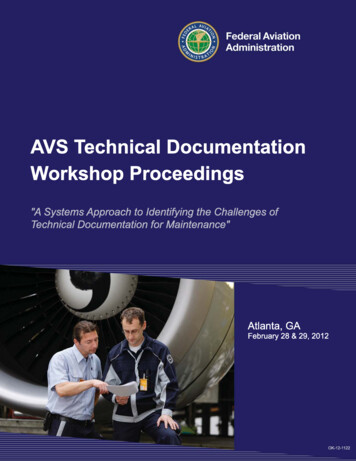
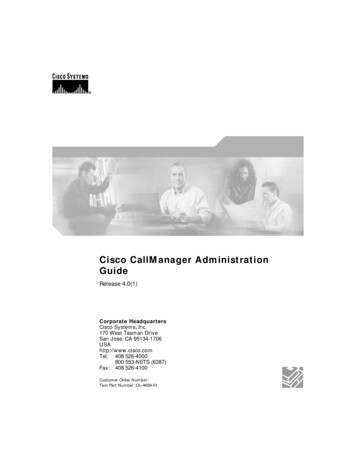
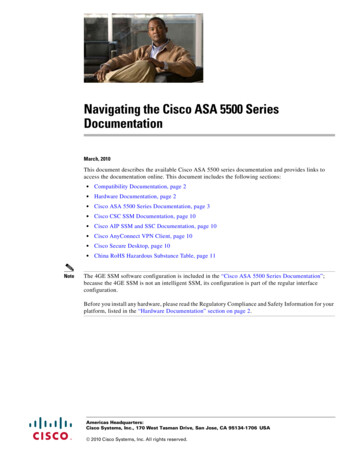
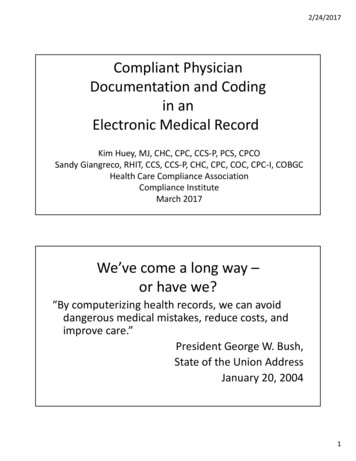

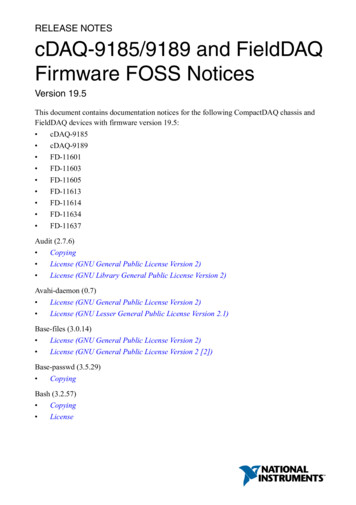

![[MS-EFSR-Diff]: Encrypting File System Remote (EFSRPC) Protocol](/img/29/5bms-efsr-5d-211006-diff.jpg)
